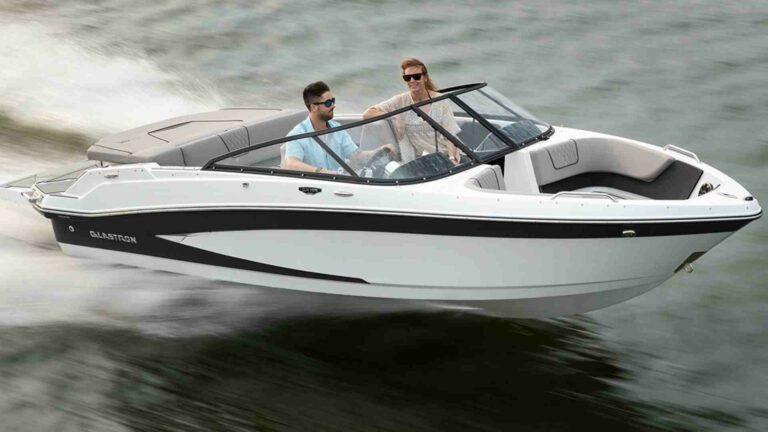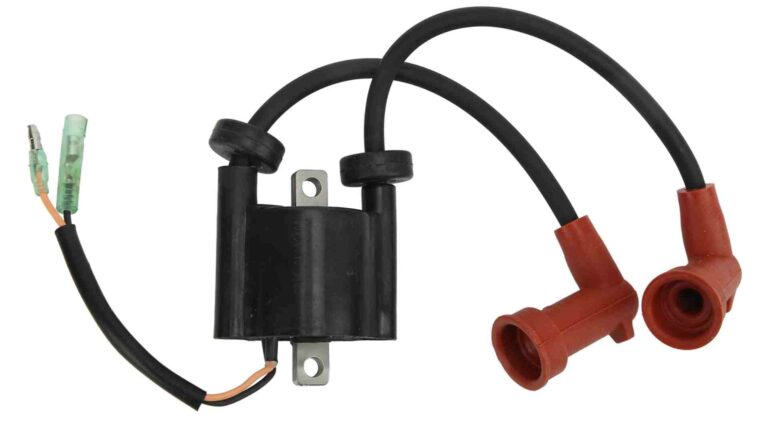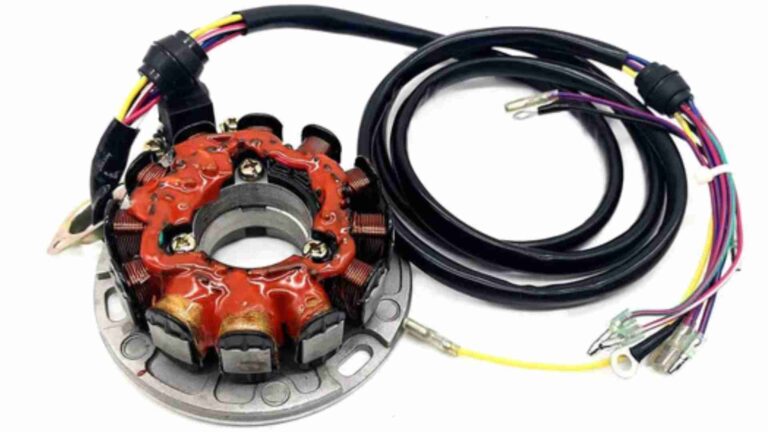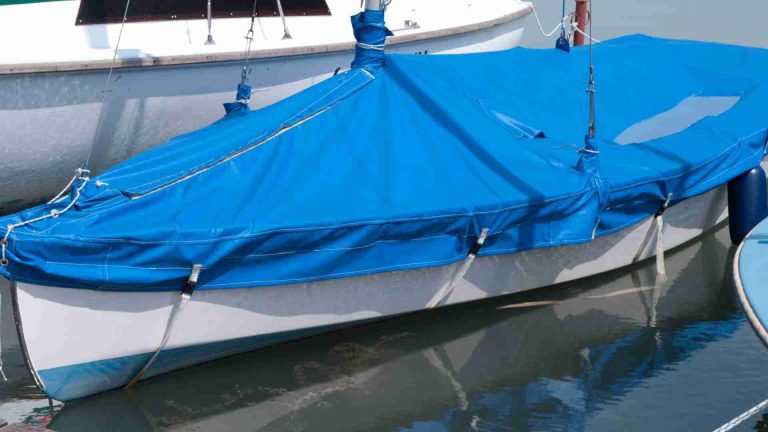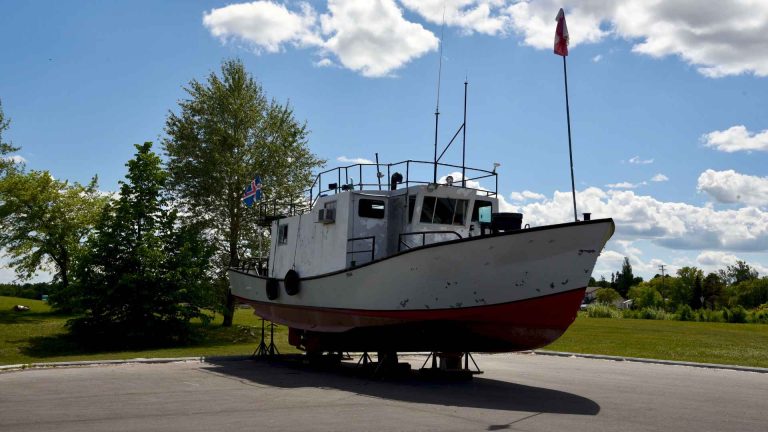What is Needed for Steering Control on a PWC? – Components
Steering control is a fundamental aspect of operating a Personal Watercraft (PWC) and plays a critical role in maneuvering and handling the craft on the water. The ability to navigate smoothly, make precise turns, and maintain control is essential for a safe and enjoyable PWC experience.
To ensure optimal steering control, it is crucial to have a solid understanding of the components involved and the requirements for proper operation. This knowledge empowers PWC operators to effectively navigate various water conditions and potential hazards.
However, steering control goes hand in hand with safety. The importance of safety cannot be overstated when it comes to operating any watercraft, including PWCs. Proper maintenance, adherence to safety guidelines, and a thorough understanding of steering control techniques are paramount to preventing accidents and ensuring the well-being of both the operator and those around them.
In this article, we will delve into the intricacies of steering control on a Personal Watercraft. We will explore the key components involved, discuss the requirements for optimal performance, and highlight essential safety considerations. By the end, you will have a comprehensive understanding of steering control on a PWC and the necessary steps to maintain safe and reliable operation on the water.
Steering Mechanisms on a PWC
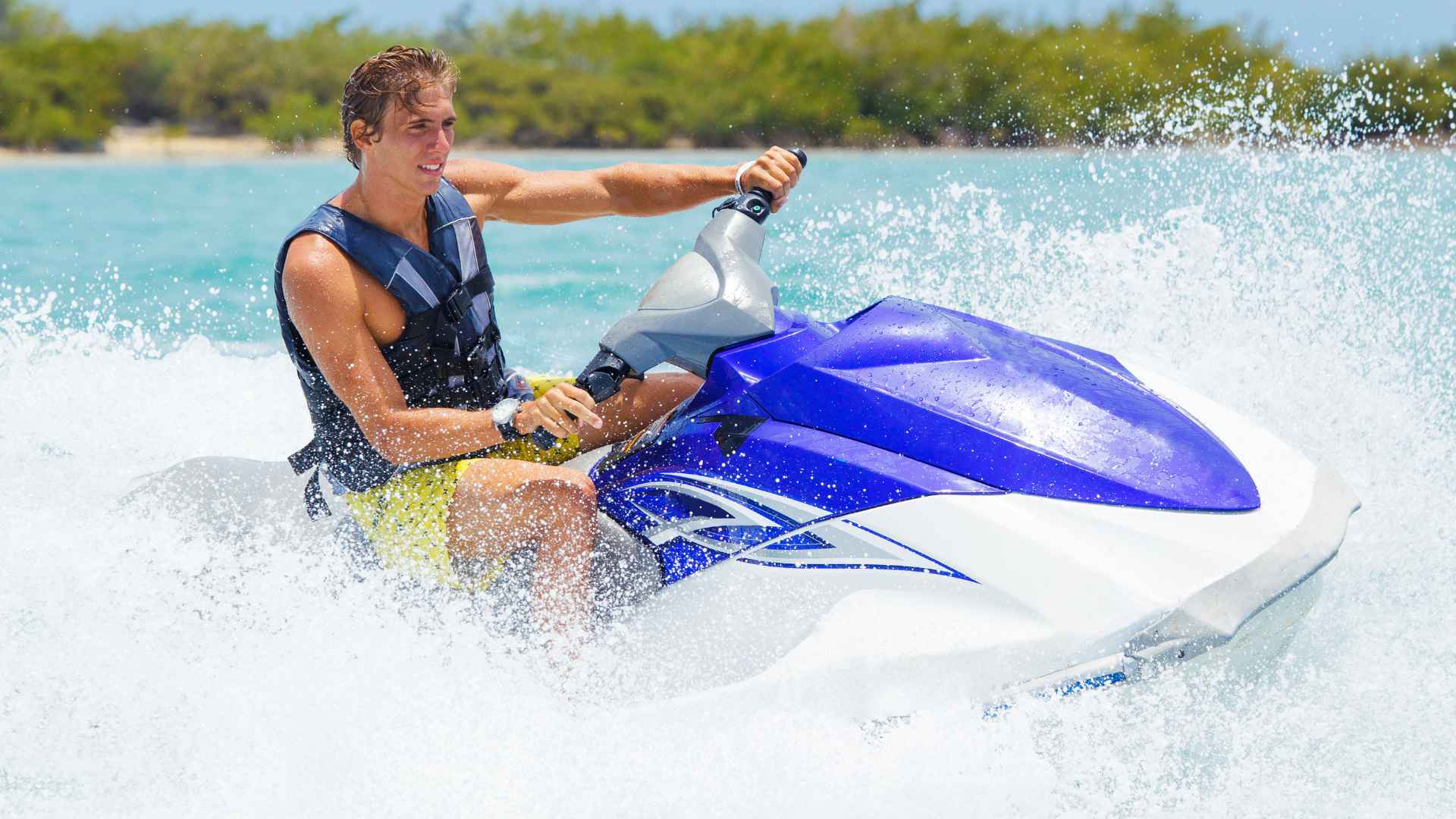
A. Handlebars and Steering System:
Explain the function of the handlebars as the primary means of controlling the direction of the PWC. – Discuss the different types of steering systems commonly used in PWCs, such as cable steering or electronic systems.
The handlebars of a PWC serve as the primary means of controlling the direction of the craft. By turning the handlebars, the operator can direct the PWC to the left or right. The handlebars are connected to the steering system, which translates the input into the desired steering action.
There are different types of steering systems commonly used in PWCs:
- Cable steering: Cable steering systems use mechanical cables to transmit the movement of the handlebars to the PWC’s steering nozzle or jet pump. These systems typically have a direct and responsive feel, allowing for precise control.
- Electronic systems: Some modern PWCs employ electronic steering systems, also known as fly-by-wire systems. These systems use sensors and electronic actuators to control the steering nozzle or jet pump. Electronic systems often provide enhanced precision, adjustability, and additional features such as variable steering modes.
The specific steering system used in a PWC can vary depending on the make, model, and year of the craft. It’s important to familiarize yourself with the specific steering system of your PWC through the manufacturer’s documentation or owner’s manual.
B. Throttle Control:
Throttle control plays a significant role in steering a PWC. The throttle controls the engine’s speed, which directly affects the steering responsiveness and maneuverability of the craft.
When accelerating, the PWC’s hull lifts out of the water, reducing the hull’s contact area and decreasing the effectiveness of the steering system. This means that steering control may be slightly diminished while accelerating. It’s crucial to maintain control and be mindful of this change in maneuverability, especially during rapid acceleration.
Conversely, deceleration increases the hull’s contact with the water, enhancing steering control. Gradual deceleration provides better stability and allows for more precise steering inputs.
It’s essential to strike a balance between throttle control and steering inputs. Sudden and aggressive throttle changes can disrupt steering stability and potentially lead to loss of control. Smooth and deliberate throttle modulation, combined with proper steering inputs, ensures optimal control and maneuverability while operating a PWC.
Understanding the relationship between throttle control and steering, as well as practicing gradual and deliberate inputs, is crucial for maintaining control and promoting safe handling of a PWC in various water conditions.
Essential Components for Steering Control on a PWC
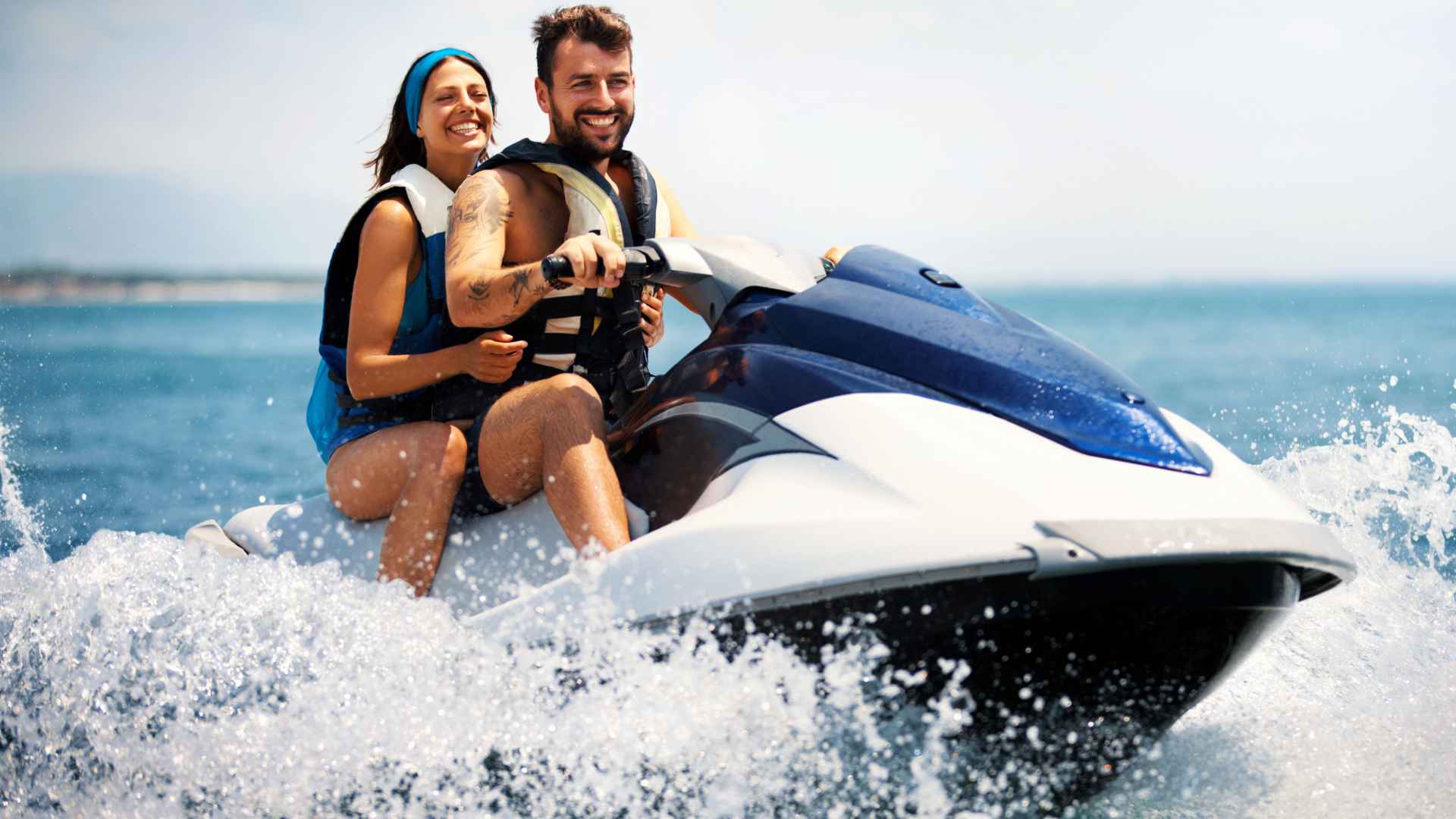
A. Steering Cable or Electronic System:
The steering cable (in cable steering systems) or electronic system (in electronic steering systems) is a crucial component for transmitting the input from the handlebars to the steering nozzle or jet pump, ultimately controlling the direction of the PWC.
For cable steering systems, the steering cable connects the handlebars to the steering nozzle, allowing the operator to turn the PWC left or right. Regular inspection, maintenance, and lubrication of the steering cable are essential to ensure smooth and responsive steering. Inspecting for signs of wear, fraying, or stiffness, and addressing any issues promptly, can prevent steering cable failure and maintain optimal steering control.
In electronic steering systems, sensors and electronic actuators interpret the handlebar input and control the steering nozzle or jet pump electronically. These systems offer precise control and may require periodic software updates or calibration as per the manufacturer’s recommendations.
B. Steering Nozzle:
The steering nozzle is responsible for redirecting the water jet produced by the PWC’s propulsion system, influencing the craft’s direction. It can be fixed, manually adjustable, or electronically controlled, depending on the PWC model.
A fixed steering nozzle maintains a constant direction and cannot be adjusted while in motion. Manually adjustable steering nozzles allow operators to change the angle of the nozzle, altering the thrust and steering characteristics. Electronic systems offer the convenience of electronically adjusting the steering nozzle, often through handlebar controls or dedicated buttons.
Proper maintenance and periodic checks are vital for optimal steering nozzle performance. Inspect the nozzle for any damage, debris, or restrictions that may affect its operation. Ensure smooth movement or adjustment in the case of adjustable or electronically controlled nozzles. Keeping the nozzle clean and free of obstructions is essential for maintaining precise steering control.
C. Trim System:
The trim system, available on many PWCs, allows operators to adjust the angle of the PWC’s hull relative to the water surface. This adjustment influences the PWC’s handling, stability, and turning capabilities.
Raising the trim angle lifts the bow of the PWC, reducing hull drag and increasing top speed. However, this can affect steering control by reducing the hull’s contact with the water and potentially compromising stability. Lowering the trim angle enhances hull contact, increasing maneuverability and improving steering response.
Understanding and utilizing the trim system is crucial for optimal steering control. Operators should familiarize themselves with the manufacturer’s guidelines and recommendations for trim adjustment based on water conditions and desired performance. Gradual and deliberate adjustments to the trim allow for fine-tuning the PWC’s handling characteristics and maximizing steering control.
Regular inspection and maintenance of the trim system, including checking for proper operation, fluid levels (if applicable), and any signs of damage or leaks, are important to ensure consistent and reliable steering control.
By paying attention to the steering cable or electronic system, steering nozzle, and trim system, PWC operators can maintain optimal steering control, enhance maneuverability, and enjoy a safe and enjoyable experience on the water.
What Are the Factors Affecting Steering Control?
A. Speed and Water Conditions:
- Speed: The speed of a PWC directly affects steering responsiveness. Higher speeds typically require more precise and gradual steering inputs to maintain control. Sudden or aggressive steering maneuvers at high speeds can result in loss of control or instability. Adjust your steering technique accordingly and anticipate the increased need for smoother and calculated inputs as speed increases.
- Water Conditions: Different water conditions pose unique challenges to steering control. Calm water provides better stability and predictability, allowing for smoother steering. However, in rough water with waves or chop, the PWC’s hull may be subjected to more movement and less contact with the water surface, affecting steering responsiveness. Additionally, currents or crosswinds can influence steering control. Adapt your steering techniques to the specific water conditions, anticipating the impact they may have on the PWC’s handling characteristics.
Tips for adapting steering techniques based on speed and water conditions:
- Maintain a firm grip on the handlebars and keep your body position balanced to enhance stability and control.
- Gradually increase or decrease speed to allow for smoother steering transitions.
- In rough water, anticipate the movement of the waves and adjust your steering inputs accordingly, keeping a controlled and balanced approach.
- Consider reducing speed and adopting a more cautious approach in unfamiliar or challenging water conditions.
- Practice and experience play a crucial role in developing the ability to adapt to varying speeds and water conditions. Gradually challenge yourself within your skill level to enhance your steering control abilities.
B. Regular Maintenance and Inspection:
- Routine maintenance: Regularly maintain and inspect the steering components of your PWC. Follow the manufacturer’s recommended maintenance schedule and procedures for lubrication, adjustments, and replacement of worn or damaged parts.
- Inspection: Conduct visual inspections of the steering system, including the handlebars, cables (if applicable), steering nozzle, and trim system (if present). Look for signs of wear, corrosion, loose connections, or any abnormalities that could affect steering control. Address any issues promptly.
- Lubrication and adjustments: Proper lubrication of the steering components is essential for smooth and precise steering operation. Use manufacturer-recommended lubricants and follow their guidelines for lubrication points and intervals. Additionally, ensure that all adjustments, such as steering cable tension or steering nozzle alignment, are within the specified range to maintain optimal steering control.
By prioritizing regular maintenance and inspections, you can identify and address any potential issues before they impact steering control. This helps ensure the reliability, responsiveness, and overall safety of your PWC’s steering system.
Remember, each PWC model may have specific maintenance requirements, so consult the owner’s manual or seek professional assistance if you have any doubts or concerns. Proper maintenance and inspection practices contribute to a safer and more enjoyable PWC experience.
Enhancing Steering Control on a PWC

A. Training and Experience:
Proper training and acquiring experience are key factors in developing effective steering control techniques. Understanding the principles of steering, practicing different maneuvers, and becoming familiar with your PWC’s handling characteristics contribute to confident and precise steering.
Consider the following to enhance your steering control skills:
- Boating safety courses: Enroll in boating safety courses or programs that offer instruction on handling and maneuvering PWCs. These courses provide valuable knowledge, safety guidelines, and practical training to improve your steering control abilities.
- Instructional videos and resources: Utilize instructional videos or online resources specifically focused on PWC steering techniques. These resources can provide visual demonstrations, tips, and guidance to help you refine your steering skills.
Remember, experience plays a significant role in improving steering control. Take the time to practice in various water conditions and become familiar with your PWC’s response to different steering inputs. Gradually challenge yourself within your comfort zone to expand your skills and develop better control.
B. Aftermarket Steering Enhancements:
Aftermarket components are available that can potentially enhance steering control on a PWC. These include steering stabilizers or performance steering systems designed to improve stability, precision, and responsiveness. These enhancements may be particularly beneficial for individuals who engage in high-performance riding or have specific steering preferences.
When considering aftermarket steering enhancements, it is crucial to conduct thorough research and consult professionals or experts in PWC customization. They can provide guidance on the compatibility of these components with your specific PWC model and advise on any potential impacts on warranty or safety. Modifications to the steering system should be approached with caution to ensure they are appropriate for your needs and do not compromise safety or overall performance.
Always prioritize safety and ensure that any modifications comply with local laws and regulations.
By investing in proper training, gaining experience, and exploring appropriate aftermarket enhancements, you can enhance your steering control abilities on a PWC. Remember to always prioritize safety and consult professionals when making any modifications to your PWC’s steering system.
Watch PWC steering and stopping techniques | Video
What components are essential for steering control on a PWC?
The essential components for steering control on a PWC include the handlebars and steering system, steering cable or electronic system, steering nozzle, throttle control, and trim system (if equipped). These components work together to allow the operator to control the direction and maneuverability of the PWC.
How does throttle control affect steering on a PWC?
Throttle control directly affects steering responsiveness on a PWC. Increasing or decreasing throttle can impact the contact between the hull and the water surface, influencing steering control. Smooth and deliberate throttle modulation is important to maintain control while accelerating or decelerating, allowing for precise steering inputs.
What maintenance is required for optimal steering control on a PWC?
To maintain optimal steering control, regular maintenance is essential. This includes inspecting and lubricating the steering components, such as the steering cable (if applicable) and steering nozzle. Check for signs of wear, corrosion, loose connections, or any abnormalities that could affect steering performance. Follow the manufacturer’s recommended maintenance schedule and procedures for best results.
Can aftermarket steering enhancements improve steering control on a PWC?
Yes, aftermarket steering enhancements such as steering stabilizers or performance steering systems can potentially enhance steering control on a PWC. However, it is important to conduct thorough research and consult professionals before making any modifications to the steering system. Ensure the components are compatible with your PWC model and consider any potential impacts on warranty or safety.
How can I improve my steering control skills on a PWC?
Improving steering control skills on a PWC requires proper training and experience. Consider enrolling in boating safety courses or accessing instructional videos and resources focused on PWC steering techniques. Practice in different water conditions, become familiar with your PWC’s handling characteristics, and gradually challenge yourself to develop confident and precise steering control.
Conclusion

In conclusion, steering control on a Personal Watercraft (PWC) is vital for safe and enjoyable operation on the water. Key components for steering control include the handlebars and steering system, steering cable or electronic system, steering nozzle, throttle control, and trim system. These components work together to allow operators to control the direction, maneuverability, and responsiveness of the PWC.
Regular maintenance is crucial for optimal steering control. This includes inspecting and lubricating steering components, checking for wear or damage, and following the manufacturer’s recommended maintenance schedule. Proper training and experience play a significant role in developing effective steering control techniques. Consider enrolling in boating safety courses, accessing instructional resources, and practicing in various water conditions to refine your skills.
Adapting steering techniques to different conditions, such as adjusting for speed and being mindful of water conditions, is essential. Smooth throttle modulation, maintaining control during acceleration and deceleration, and utilizing the trim system appropriately contribute to precise steering control.
Always prioritize safety when operating a PWC. Practice responsible boating, follow local regulations, and wear appropriate safety gear. If you have any steering-related concerns or are unsure about any aspect of PWC steering control, seek professional assistance or guidance. Professionals can provide tailored advice and solutions based on your specific needs and circumstances.
By prioritizing regular maintenance, proper training, and responsible boating practices, you can enhance steering control on your PWC, ensuring a safe and enjoyable experience on the water. Remember, safety should always be the primary focus, and seeking professional assistance is advisable whenever needed.
Share What is Needed for Steering Control on a PWC? – Components with your friends and Leave a comment below with your thoughts.
Read 9 Important Things You Need on a Boat by Law: Guide until we meet in the next article.
